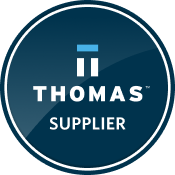Why Injection Molding?
BACKGROUND: Injection molding is a forming process that was designed to produce a part of complex shape with little or no machining. Over the past 60 years the plastic injection molding industry has perfected the use of this process to produce high volumes of product in a very consistent manner and at a cost not otherwise possible. Injection molding machines have become very high-tech over those years and the plastics industry has impacted our lives in ways we couldn't have possibly imagined.
ATS has optimized injection molding for advanced ceramics using some of the same high-tech equipment and we produce complex advanced ceramic components with the same consistency and cost benefits.
The image below illustrates a basic injection molding machine.

Ceramic Injection Molding by ATS
Injection molding of advanced ceramics has substantial benefits.
COST SAVING: The cost of machining advanced ceramic requires expensive tooling and it is very time consuming even for the most sophisticated machining equipment. The costs associated with machining can be eliminated in whole or in large part by injection molding. Complex features like fins or holes or tapers or rounded surfaces can be molded into the part. Machining can also leave microscopic flaws behind in the part which can impact the parts performance. Our as-fired surfaces usually result in better performing product.
CONSISTENCY: Injection molding has proven itself as a very consistent, accurate, and repeatable process. Hundreds of thousands of parts, each molded under the same precisely controlled conditions. ATS typically quotes repeatability of a feature to within +/-0.25% or less.
REPEATABILITY: ATS's injection molding feedstock does not require compression during forming in order to reach an appropriate density. Pressing operations used to produce simple shapes with advanced ceramic are very sensitive to the conditions associated with the compaction of the powder and each part is subject to variation. Injection molded feedstock has little to no compressible constituents and are far less sensitive to the molding conditions. The density of the molded part is primarily a function of the inherent density of the feedstock and is therefore far more consistent from part to part.
PRECISION: ATS has spent years perfecting our proprietary feedstock and has learned to produce the highest loading possible yet still maintain a robust molding process. Loading or "green" density is important because it determines the amount of shrinkage the parts will undergo when fired or sintered. ATS typically achieves higher green density than pressed shapes and therfore experiences lower shrinkages in firing. Our lower shrinkage allows for tighter control over dimensions, higher finished density, and stronger, tougher product.
8181B Industrial Place, Alpharetta, GA 30004 | 770-490-1245 | Site Map




